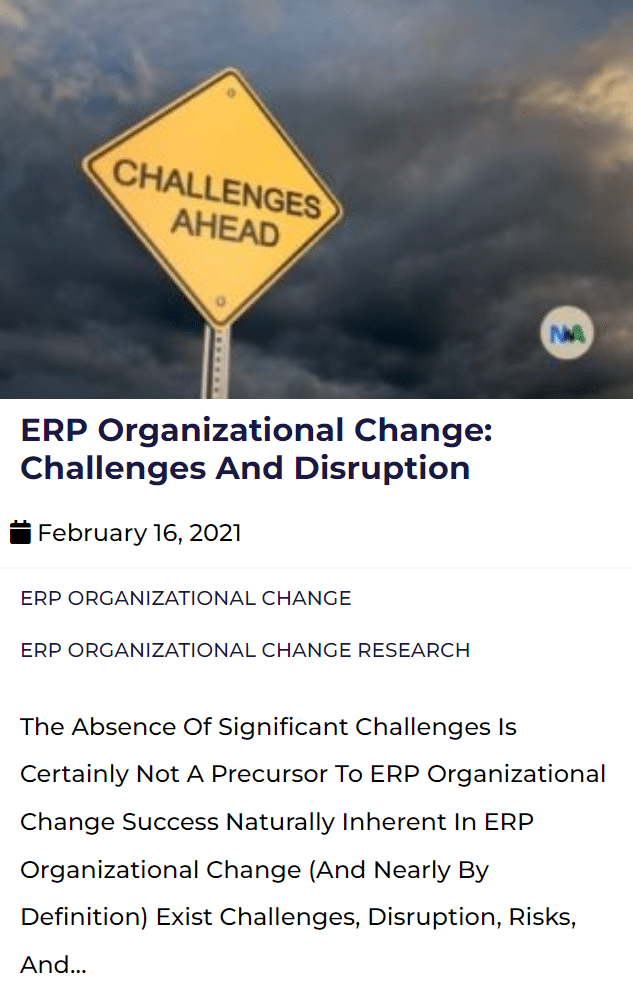Organizational culture plays a pivotal role in determining the outcome of organizational change initiatives and organizational performance
Article Contents
- Interpreting Organizational Culture
- Diverse Scholarly Perspectives of Organizational Culture
- The Neuroscience of Organizational Culture
- The Importance of Organizational Culture in Change Initiatives
- Unraveling the Complexities of Organizational Culture Change
- Reflective Leadership: A Tool for Navigating Culture Change
- Strategies to Effect Meaningful Cultural Change
- Practical Implications for Leaders of Organizational Culture Change
- Creating and Managing a Dynamic Organizational Culture
Interpreting Organizational Culture
The interpretation of organizational culture varies among scholars. While some perceive culture as a tangible entity consciously shaped by leaders, others view it as a fluid phenomenon, evolving spontaneously through the interactions and experiences of individuals. A recent area of exploration is the neuroscience of organizational culture, investigating how collective neural patterns contribute to culture’s emergence and evolution. There has been a great deal of fascinating work and research in how to interpret organizational culture.
Diverse Scholarly Perspectives of Organizational Culture
Organizational culture is interpreted through various lenses in academic circles. Schein (1985) conceptualized culture as a three-level phenomenon comprising artifacts, espoused values, and basic underlying assumptions. Here, the culture is viewed as something an organization ‘has’, deliberately designed and instilled by leaders. In contrast, other scholars, such as Martin (2002), present culture as an emergent, socially constructed phenomenon that an organization ‘is’. This view highlights culture’s organic development from the lived experiences and interactions of organization members. Understanding these diverse perspectives, provided as a couple of examples, is essential as they offer different implications for cultural change strategies (Schein, 1985; Martin, 2002).
The Neuroscience of Organizational Culture
Organizational culture study and research continue to evolve. A fascinating new wave of research has begun to explore the interplay between neuroscience and organizational culture. This line of inquiry focuses on understanding how the collective neural patterns of individuals in an organization shape and are shaped by organizational culture (Becker, 2018).
For example, research indicates that shared experiences within an organization can result in synchronized neural activities, potentially contributing to shared cultural norms (Hasson et al., 2012).
Further, neuroscientific insights can shed light on how cultural change might be facilitated or resisted at a neurological level, adding a new dimension to the understanding of organizational culture. Organizational culture is a key notion that can have a substantial impact on organizational performance. As such, research continues to help organizations better understand and navigate the key organizational influences that advocate for positive organizational performance.
The Importance of Organizational Culture in Change Initiatives
Organizational culture plays a pivotal role in determining the outcome of organizational change initiatives and organizational performance. Influenced by various factors, an organization’s culture can either catalyze or obstruct change, making it an essential aspect to understand and navigate for effective change management. This means that the deeply ingrained values, beliefs, and behaviors that define the current culture can either align with the proposed changes, thus driving them forward, or clash with them, creating resistance. Therefore, successful change initiatives often involve a thorough understanding of the existing culture, the identification of cultural elements that may either aid or impede the change, and the formulation of strategies to leverage or address these elements respectively.
Unraveling the Complexities of Organizational Culture Change
An organization is not a monolith; instead, it is a multifaceted system consisting of individuals with distinct perspectives, backgrounds, and behaviors. The interconnected network of relationships, power dynamics, and subcultures adds layers to the complexity of decoding its culture. As such, the first step in managing culture change is to acknowledge these complexities. This means leaders must recognize that every employee, team, and department may perceive and respond to the proposed change differently.
Understanding these different perspectives and their implications for the change initiatives can help leaders develop more effective, targeted change strategies. For example, leaders might need to formulate different communication strategies to address varying employee concerns, or they might need to negotiate power dynamics to overcome resistance in certain subcultures.
Reflective Leadership: A Tool for Navigating Culture Change
Navigating culture change might seem overwhelming, but reflective leadership can augment leaders’ abilities to guide effective change. Reflective leadership, as proposed by Schön (1987), involves a process of continuous learning and adaptation. It allows leaders to critically evaluate their actions and assumptions and modify their practices accordingly. This continuous loop of reflection and action can facilitate more responsive and flexible change management. For instance, leaders can use reflection to gain insights into why certain change strategies are not working, what underlying cultural factors might be causing resistance, or how they can modify their own behavior to better align with the desired culture.
Strategies to Effect Meaningful Cultural Change
Understanding how to effect meaningful cultural change involves considering various facets of the organization. While there’s no one-size-fits-all strategy, several key areas are worth considering:
Assessing Organizational and Individual Culture:
Before initiating any change, it’s essential to conduct a thorough assessment of the existing organizational culture. This involves:
- Surveys or interviews to understand the values, beliefs, and behaviors that define the current culture.
- Assessing the alignment between individual behaviors and overarching organizational values.
Understanding the Organizational Context:
Change does not happen in a vacuum, and understanding the broader organizational context can inform the change strategy:
- Consider the wider industry trends and societal values that might impact the proposed cultural change.
- Reflect on the internal organizational environment, including its history of change and the readiness for change.
Identifying Cultural Influencers:
Cultural influencers can play a significant role in driving or obstructing change:
- Identify individuals who have a significant influence over the culture, such as respected long-term employees, charismatic middle managers, or social connectors.
- Engage these individuals early in the change process, involving them in the planning and implementation stages to foster wider buy-in.
Practical Implications for Leaders of Organizational Culture Change
Understanding the complexities of organizational culture provides leaders with valuable insights that can be applied in the real world. Here are some practical implications that leaders can consider when striving to effect cultural change within their organizations:
Adopt a Holistic Approach:
Organizational culture is not just about the sum of individual beliefs, values, or behaviors. It’s a dynamic system where multiple elements interact. Leaders should therefore consider the broader dynamics at play, including interpersonal relationships, power structures, and the social environment.
Embrace Diversity:
An organization is a melting pot of diverse perspectives, experiences, and backgrounds. Echoing Martin’s (2002) perspective of culture, embracing this diversity can enrich the organization’s culture, fostering innovation and adaptability. Leaders should promote a culture of inclusion where every voice is heard and valued.
Promote Continuous Learning:
Cultivating a learning culture is crucial for organizational adaptability and growth. Leaders can encourage learning by providing training opportunities, encouraging knowledge sharing, and promoting a culture where mistakes are seen as opportunities to learn.
Leverage Neuroscience Insights:
As neuroscience continues to shed light on how our brains respond to cultural cues, leaders can leverage these insights to promote positive cultural change. For instance, understanding how shared experiences lead to synchronized neural activities could inform strategies for team-building or collective problem-solving.
Model Desired Behaviors:
Leaders play a crucial role in setting the cultural tone of an organization. By embodying the behaviors and attitudes they wish to see, leaders can inspire and influence their teams toward desired cultural norms.
Support Organic Cultural Evolution:
While leaders can steer and guide, they should also appreciate that much of culture evolves organically. Therefore, creating an environment that allows for this organic growth—such as one that values openness, collaboration, and innovation—can be more beneficial in the long run.
Understanding and navigating organizational culture is not a straightforward task. However, by adopting reflective leadership practices, appreciating the complexity of culture, and leveraging emerging insights from fields like neuroscience, leaders can better position themselves to guide effective and meaningful cultural change.
Creating and Managing a Dynamic Organizational Culture
Leaders should aim to create an environment that fosters desired behaviors and promotes the development of a supportive culture. Recognizing that culture is not static, leaders should focus on continuously nurturing and managing the evolving entity. Embracing the complexity of organizational culture, rather than attempting to simplify or control it, may hold the key to effective culture change.
In conclusion
In conclusion, Lewin’s (1951) insight, “If you want to truly understand something, try to change it,” resonates deeply with the notion of organizational culture. Perhaps the best way to understand culture is to attempt changing it. Effective culture change requires leaders to not only understand and appreciate the complexities inherent in their organization’s culture but also develop strategies that can influence and guide its evolution. As such, leaders must balance their efforts between shaping organizational culture and facilitating its organic growth.
Dr. Jack G. Nestell
Feeling Overwhelmed by Organizational Culture Change? Let’s Chat!
After delving into the intricacies of organizational culture, it’s clear that guiding change within this realm is both an art and a science. If you’ve found value in this article and are thinking, “Now, where do I begin for my organization?”, you’re not alone. Our team is passionate about these challenges, and we’ve got the hands-on tools and experience to guide you. Drop us a line, and let’s turn those insights from the article into actionable steps for your organization. Let’s make culture change a journey we embark on together!
Referrences
- Becker, W. J. (2018). The neuroscience of organizational behavior: establishing a new field of study.
- Hasson, U., Ghazanfar, A. A., Galantucci, B., Garrod, S., & Keysers, C. (2012). Brain-to-brain coupling: a mechanism for creating and sharing a social world.
- Lewin, K. (1951). Field theory in social science; selected theoretical papers.
- Martin, J. (2002). Organizational culture: mapping the terrain.
- Schein, E. H. (1985). Organizational culture and leadership.
- Schön, D. A. (1987). Educating the reflective practitioner.
Related Articles
Related Podcasts

Episode 87: Organizational Transformation in ERP: Strategies for, Cultivating Culture, and Unleashing Innovation
In this episode, we discuss the dynamics of organizational transformation in ERP. With insights from a seasoned expert at a premier leadership development firm, we explore tactics to boost high-performing teams and strategies for strategic alignment. Learn how to cultivate a customer-centric culture and energize your innovation funnel, bringing unparalleled value to stakeholders in ERP Organizational Change across Private Equity portfolio companies.
More Related Podcasts
About Nestell & Associates
Where People, Processes, and Technology Align
Nestell & Associates is a strategy and management firm. We can help you take your portfolio companies to the next level by demonstrating how to execute a scalable, methodical, and disciplined approach to ERP Organizational Change and Digital Transformation success.




